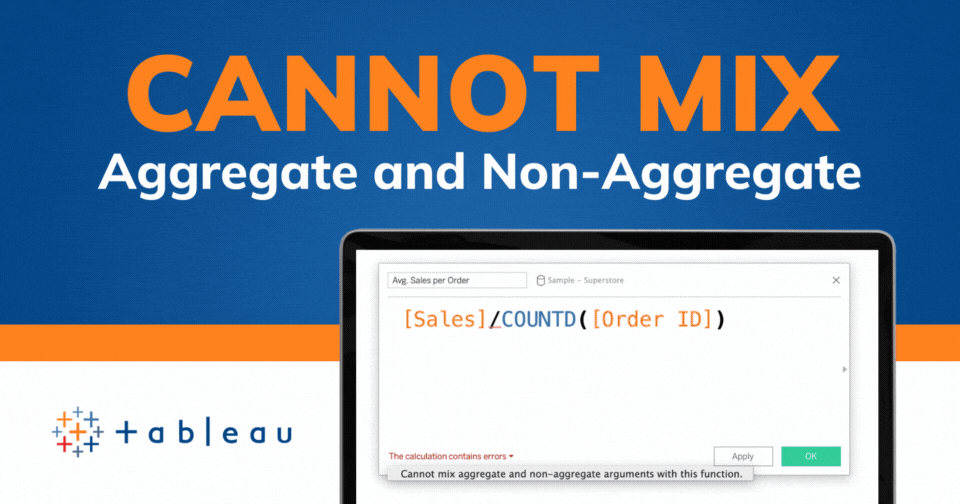Tableau Conference 2025 | Know Before You Go
If you’re a data enthusiast, analytics professional, or just someone curious about Tableau’s latest innovations, the Tableau Conference 2025 is your...

If there’s one problem that most businesses don’t have, it’s a lack of data. In fact, the amount of data in the world is expected to surpass 50 zettabytes by 2025, representing a 34-fold increase since 2015.
For today’s SMBs, the challenge isn’t commonly a lack of data, but a lack of ability to unlock its value in enabling informed decision-making. That’s where data analytics comes in.
91.9% of companies that have invested in data analytics strategy and solutions have achieved measurable business value. This is almost double the return on investment they were seeing in 2017.
Data analytics broadly refers to the science of analyzing raw data to draw conclusions from the information it holds. Previously, data analytics relied heavily on manual processes, such as mulling over spreadsheets. That’s no longer practical given the vast amounts of data available, hence businesses need to use algorithmic solutions to turn data into actionable insights.

A data strategy is a comprehensive plan outlining how a business collects, manages, and uses data to achieve its objectives. To that end, it’s a combination of three critical components – people, processes, and technology. Business leaders are responsible for building a data-literate company culture and establishing the policies and processes for data governance and quality control. Technical solutions, such as artificial intelligence and cloud data warehouses, are key enablers of those processes.
Building a data strategy broadly encompasses the following steps:
While artificial intelligence and machine learning algorithms get the media buzz, there are multiple levels of sophistication and data maturity with data capabilities. There are four basic types of data analytics, each of which can accommodate a variety of business goals:
Virtually every business in every industry can benefit from the types of data analytics described above. For instance, a manufacturer might use data analytics to optimize production lines and perform predictive maintenance, while a retailer might use data analytics to better personalize their marketing campaigns and shopper experiences. The themes in data analytics use cases are similar, but each industry has a unique nuance to capture a strategic data advantage.
‘Garbage in, garbage out’ is a common phrase in data science expressing how poor-quality data will produce a poor-quality output. For instance, if an artificial intelligence model is trained on biased information, then it will inevitably have a biased output. The many predictions during the coronavirus pandemic, most of which were data-driven, were a perfect example of this. Some countries came up with forecasts that ended up being widely off the mark, because the quality of the data they used was questionable, inaccessible, or outdated.
This is why every data strategy must start with establishing a stringent process for maintaining quality control. That’s a fundamental part of data governance, or the practice of managing the availability, usability, integrity, and security of data. It’s clear that most businesses are sitting on mountains of ones and zeros, but the fact is that most of the data is unstructured, and not all of it is potentially useful either.
Maintaining data quality requires a governance strategy that clearly defines accuracy, completeness, consistency, and reliability standards. Software-based solutions can automate the process of data cleansing, validation, and monitoring to an impressive degree, but keeping humans in the loop has never been more important. This involves regular auditing and ongoing training and awareness. Simply put, you need to make sure your data is in working order before you experience the full benefits of data analytics.
The average organization has hundreds of data sources at their disposal, including internal and external databases spread across everything from social media platforms to web analytics to financial systems. However, while these data sources can provide a wealth of information, for decision-makers to derive insights from, the various sources often lack interoperability. This leads to silos which, in turn, leads to inconsistent data insights and a lack of operational efficiency. Siloed data can also lead to organizational resistance, where different departments are either unable or unwilling to share information.
Breaking down these silos starts with encouraging a culture of data-sharing and collaboration across branches, departments, and relevant third parties. For instance, a healthcare provider might implement a shared digital platform where nurses, doctors, and administrative staff can all access and update patient records in real-time without manually exchanging them between disparate systems. In doing so, they can foster a more collaborative environment that leads to more responsive and higher-quality patient care.
Integrating data sources begins with an extensive audit to assess the current state of data and where the silos exist. For example, on-premises internal databases and spreadsheets might lack interoperability with those hosted in the cloud and updated in real-time.
Although businesses should prioritize integration and interoperability when implementing new technology, modernization isn’t the right approach for its own sake. It’s often necessary to choose integration tools and connectors to help bridge the gaps between otherwise disparate and incompatible systems you’re already using. For instance, a business might use an integration solution to centralize customer data across sales, marketing, and customer service to attain a more unified customer view.
Artificial intelligence is a powerful solution in this endeavor since it can largely automate the process of identifying, extracting, and synchronizing data from diverse sources.

A cloud data warehouse is a type of web-based data storage service designed to store and manage large amounts of data in a centralized location for easier access and scalability. One such example is Snowflake, which allows organizations to consolidate data sources including online transaction processing (OLTP), enterprise applications, web apps, and third-party apps and services, among others.
Cloud data warehouses are highly versatile compared to on-premises systems, since they can be accessed from anywhere and can scale with demand. Historically, organizations were required to overspend on internally hosted hardware. Some services also support data localization, allowing you to choose which data center to host your data. This is important in many regulated industries, where certain data – such as patient health information – needs to be stored in the same jurisdiction as the organization that collects it or that of the individuals to whom it pertains.
Cost is another key advantage of using a cloud data warehouse. Since all data is hosted in a remote data center, companies can forgo the high expenses of building and managing their own server farms. Instead, these capital expenses become predictable operational expenses whereby you typically only pay for the resources you actually use. That way, there’s no need to invest in additional hardware when you need more capacity. Instead, you can upgrade or even downgrade your plan as needed.
Cloud data warehouses also tend to be more secure than on-premises solutions. Reputable vendors use current hardware and offer robust security features and compliance with data regulations, typically under a shared responsibility model. Access controls may be defined on the basis of the individual’s role in an organization and boosted with secondary authentication measures, such as biometric identification or one-time passwords (OTP). This ensures data confidentiality and integrity to a degree that’s much harder to achieve in-house – especially if, like most SMBs, you don’t have a fully-resourced IT administration and cybersecurity department.
As businesses continue to amass huge amounts of data, those with a clearly defined data strategy will win. While artificial intelligence is often touted as a solution, its application doesn’t happen in a bubble. To migrate from manual tools and processes like spreadsheets, you need a strategy encompassing integration and organization-wide change management. It’s not simply a matter of deploying the latest AI-driven analytics tools and then reaping the rewards overnight.
However, by starting with a solid data foundation and strategy, there’s no denying that artificial intelligence has become a critical enabler of modern business models.
Transform your data into actionable insights today! DataDrive is the trusted analytics team unlocking data-driven success for small business leaders. Contact us today!
-2.gif)
If you’re a data enthusiast, analytics professional, or just someone curious about Tableau’s latest innovations, the Tableau Conference 2025 is your...

Tableau Plus is the new premium offering from Tableau, a leading data visualization and business intelligence platform. It builds upon the...

If you've spent any time working with Tableau, you've likely encountered the dreaded "Cannot Mix Aggregate and Non-Aggregate Arguments" error. It's a...